Wind-class Icebreakers on:
[Wikipedia]
[Google]
[Amazon]
The Wind-class icebreakers were a line of diesel electric-powered icebreakers in service with the United States Navy, United States Coast Guard, Royal Canadian Navy, Canadian Coast Guard and Soviet Navy from 1944 through the late 1970s. They were very effective ships: all except ''Eastwind'' served at least thirty years, and ''Northwind'' served in the USCG continuously for forty-four years. Considered the most technologically advanced icebreakers in the world when first built, the Wind-class icebreakers were also heavily armed; the first operator of the class was the United States Coast Guard, which used the vessels for much-needed coastal patrol off Greenland during World War II. Three of the vessels of the class, ''Westwind'', ''Southwind'', and the first ''Northwind'' all went on to serve temporarily for the Soviet Union under the
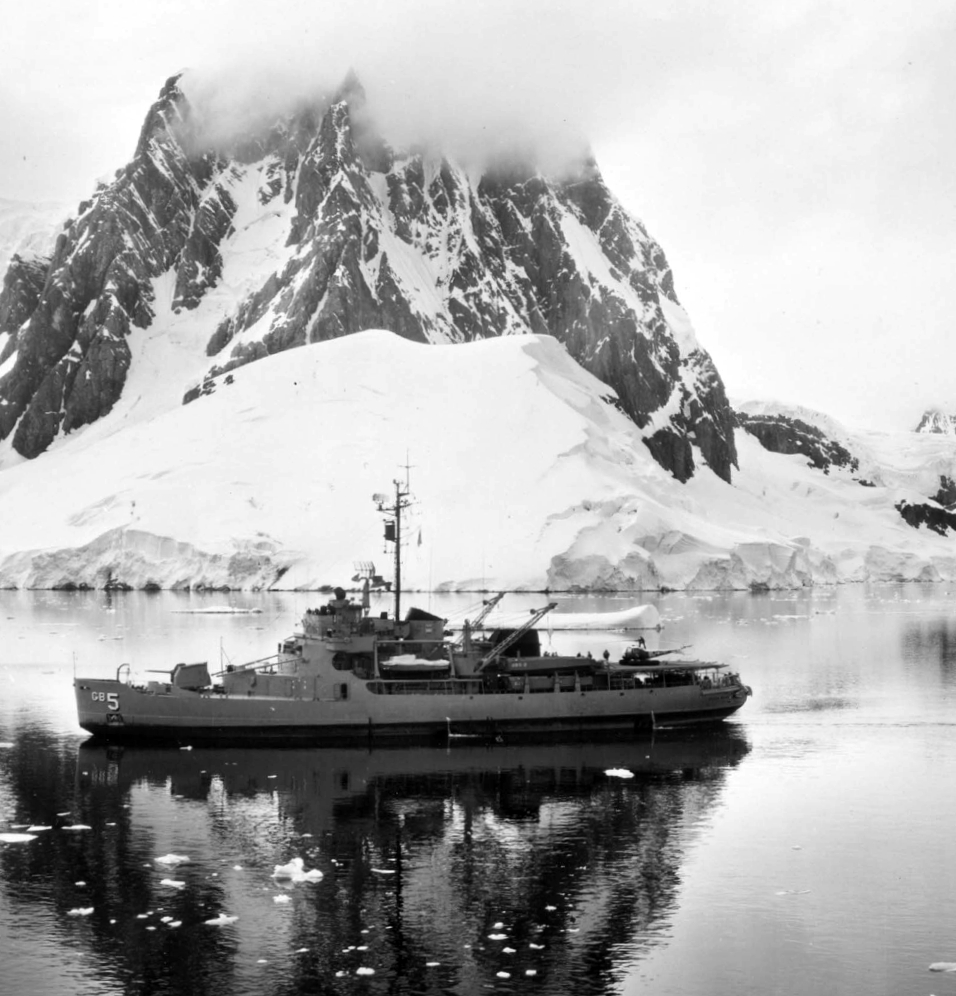 * Builders: (
* Builders: (
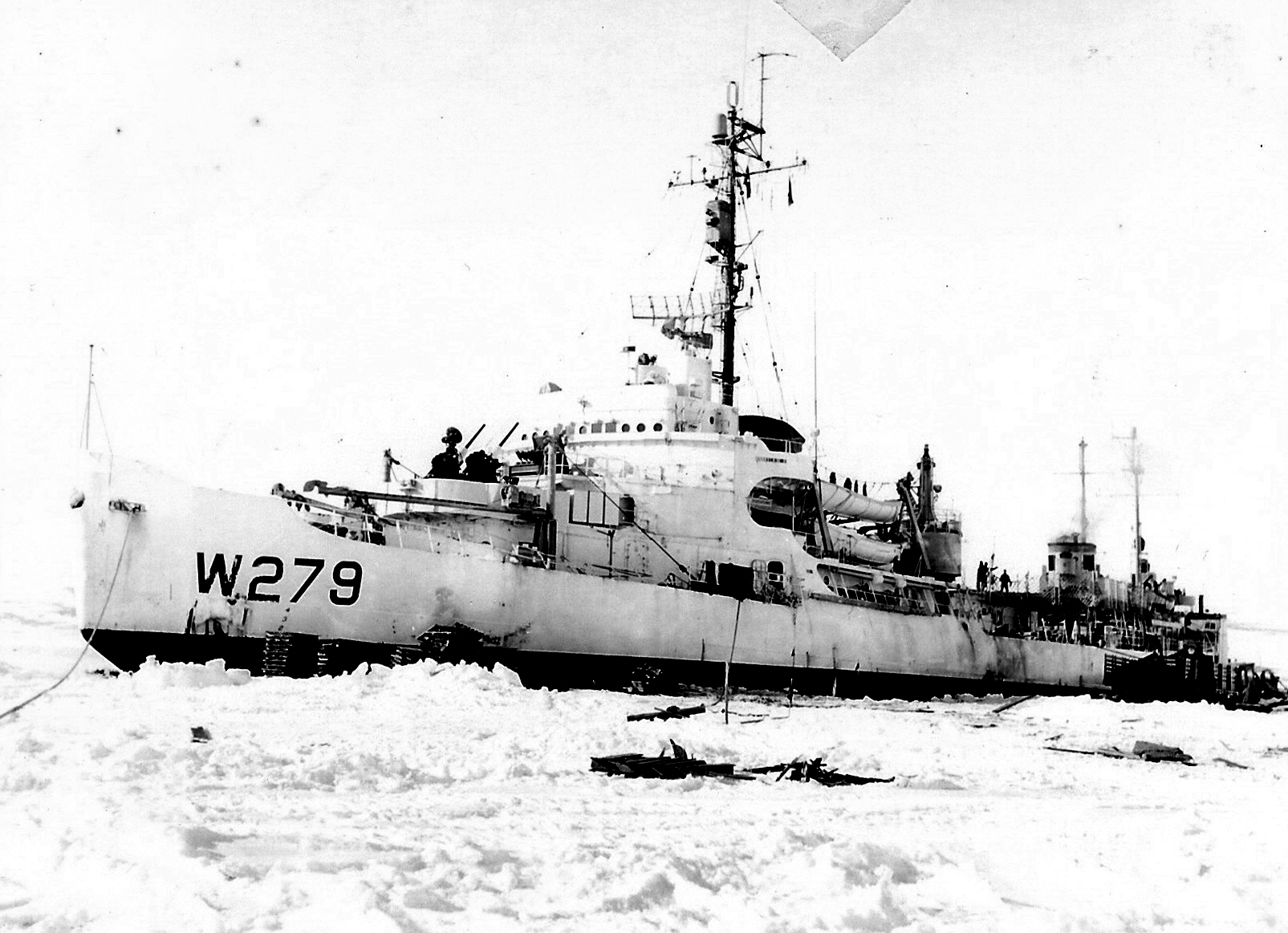 * Builders: (
* Builders: (
 * Builders: (
* Builders: (
 * Builders: (
* Builders: (
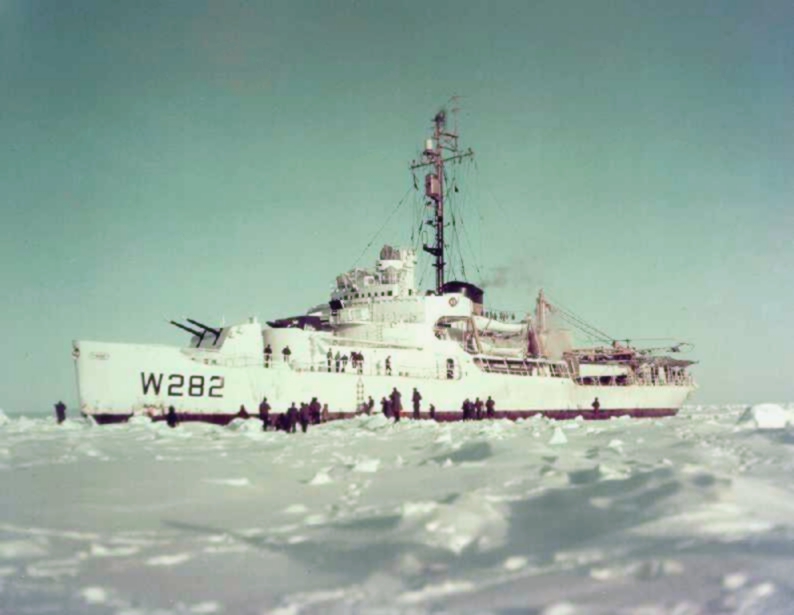 * Builders: (
* Builders: (
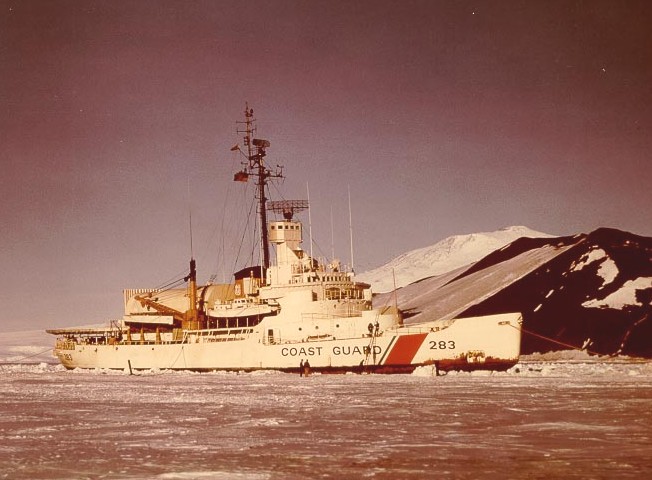 * Builders: (
* Builders: (
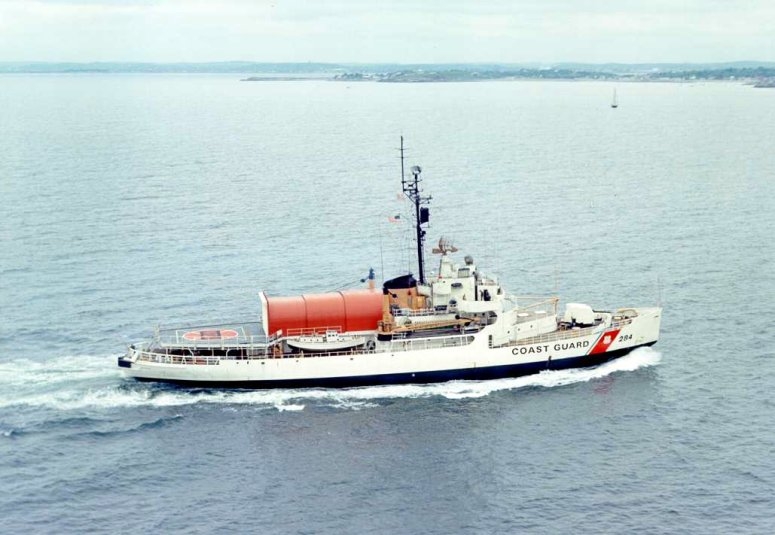 * Builders: (
* Builders: (
 * Builders: (
* Builders: (
Accessed 20 DEC 2021. Icebreakers of Canada Icebreakers of the Royal Canadian Navy Auxiliary icebreaker classes Auxiliary ship classes of the United States Navy
Lend-Lease
Lend-Lease, formally the Lend-Lease Act and introduced as An Act to Promote the Defense of the United States (), was a policy under which the United States supplied the United Kingdom, the Soviet Union and other Allied nations with food, oil, ...
program, while two others were built for the United States Navy and another was built for the Royal Canadian Navy; all eight vessels were eventually transferred to the United States Coast Guard and the Canadian Coast Guard.U.S. Department of Homeland Security. U.S. Coast Guard Historian's Office. http://www.uscg.mil/history/webcutters/Icebreakers.asp Charles D. "Doug" Maginley. ''The Canadian Coast Guard 1962-2002''. Vanwell Publishing LTD. 2003. .My Royal Canadian Navy. http://myrcn.ca/18labrador/labrador.html
The Wind-class ships were the first class of true icebreakers built by the United States. Gibbs & Cox of New York provided the designs with input from the Coast Guard's Naval Engineering Division. The final design was heavily influenced by studies conducted by then LCDR Edward Thiele Edward Thiele was a rear admiral in the United States Coast Guard.
Biography
Thiele was born on September 4, 1905, in Washington, D.C. He graduated from McKinley Technology High School. Thiele died in 1981.
Career
Thiele was originally a member of ...
, USCG (later RADM, and Engineer in Chief of the U.S. Coast Guard) of foreign icebreakers, namely the Swedish '' Ymer'', built in 1931, and the Soviet ''Krasin''.
Seven ships of the class were built in the United States, and one modified version, HMCS ''Labrador'', was built in Canada.Icebreakers in the North. University of Calgary. https://www.ucalgary.ca/arcticexpedition/icebreakers/hmcs-labrador CANADA AVIATION MUSEUM AIRCRAFT. PIASECKI (VERTOL) HUP-3 (RETRIEVER). ROYAL CANADIAN NAVY (RCN). http://www.aviation.technomuses.ca/assets/pdf/e_PiaseckiHUP-3.pdf
Construction
State of the art when designed, their hull was of unprecedented strength and structural integrity. The outer hull plating was constructed with 1-5/8 inch thick high tensile steel and they had a double bottom above the waterline with the two "skins" being approximately 15 inches apart, insulated with cork. Framing was closely spaced and the entire hull was designed for great strength. With a relatively short length in proportion to the great power developed, their bow had the characteristic sloping forefoot that enabled her to ride up on heavy ice and break it with the weight of the vessel. Their stern was similarly shaped to facilitate breaking ice while backing down. The sides of the icebreaker were rounded, with marked tumblehome, that enabled the ship to break free from ice by heeling from side to side. Such heeling was accomplished by shifting water rapidly from wing tanks on one side of the ship to the other. A total of 220 tons of water could be shifted from one side to the other in as little as 90 seconds, which induced a list of 10 degrees. Ballast could also be shifted rapidly between fore and aft tanks to change the trim of the ship. Diesel electric machinery was chosen for its controllability and resistance to damage, and they were fitted with a removable front propeller used to create a wash to clear ice.General characteristics
(as originally fitted during World War II) * Builder:Western Pipe and Steel Company
The Western Pipe and Steel Company (WPS) was an American manufacturing company that is best remembered today for its construction of ships for the Maritime Commission in World War II. It also built ships for the U.S. Shipping Board in World Wa ...
(WPS) San Pedro, California
* Power Plant: six Fairbanks Morse diesel engines at 2000 Bhp each, powering 3 electric propulsion motors. Two screws aft, one forward, (the bow screw was detachable and seldom used for propulsion; it was primarily to create a wash to clear away broken ice).
* Length: 269 ft (82 m)
* Beam: 63.5 ft (19.4 m)
* Displacement: approx. 6,515 tons full load (fl)
* Speed:
* Aircraft: 1 Grumman J2F Duck
The Grumman J2F Duck (company designation G-15) is an American single-engine amphibious biplane. It was used by each major branch of the U.S. armed forces from the mid-1930s until just after World War II, primarily for utility and air-sea resc ...
seaplane
* Cost: about US$10 million each
* Service Life: An estimated 20 years
* Crew: 21 officers, 295 enlisted as built; (after World War II, the U.S. vessels of the Wind-class had their armament gradually reduced, which also reduced their complements)
* Armament: Four 5-inch/38 (127 mm) dual purpose guns (2 twin turrets). Twelve 40 mm/60 AA guns (3 quadruple turrets). Six 20 mm/80 AA; Y-guns. Two depth charge
A depth charge is an anti-submarine warfare (ASW) weapon. It is intended to destroy a submarine by being dropped into the water nearby and detonating, subjecting the target to a powerful and destructive Shock factor, hydraulic shock. Most depth ...
racks. One Hedgehog launcher. M2 Browning machine guns and small arms. Due to being ordered during the war the first five U.S. built Wind-class icebreakers were heavily armed for ships of their size. ''Northwind/Staten Island (WAG 278)'' armament reduced to four single 3-inch/50 and eight single 40 mm for Soviet service. Weapons systems were gradually removed, and by 1970 all that remained were M2 Brownings, M60 machine gun
The M60, officially the Machine Gun, Caliber 7.62 mm, M60, is a family of American general-purpose machine guns firing 7.62×51mm NATO cartridges from a disintegrating belt of M13 links. There are several types of ammunition approved for ...
s, and small arms for law enforcement purposes.
* Dates Deployed:1942 to 1989
U.S. Ship Numbers
Initially, the ships of the Wind-class carried the designation of either WAG for Coast Guard, Auxiliary, General, or, (the U.S. Navy) AGB for Auxiliary, General, Breaker. In 1949 all U.S. Coast Guard WAGs were redesignated WAGBs for Coast Guard, Auxiliary, General, Breaker. During 1965 and 1966, all U.S. Navy icebreakers were transferred to the U.S. Coast Guard. NB: The two ''Northwinds'' referenced below are not to be confused with one another. *The USCGC ''Staten Island'' (WAG-278) was built as ''Northwind'' (WAG-278), commissioned as ''Staten Island'' (WAG-278) and immediately sent to the U.S.S.R. under lend-lease. Upon return she was USS ''Northwind'' (AGB-5) for less than three months, then renamed USS ''Staten Island'' (AGB-5) to avoid confusion with USCGC ''Northwind'' (WAG-282), and finally renamed USCGC ''Staten Island'' (WAGB-278). *The USCGC ''Eastwind'' (WAG-279) was redesignated USCGC ''Eastwind'' (WAGB-279). *The USCGC ''Southwind'' (WAG-280) on return from U.S.S.R Lend-Lease service was renamed USS ''Atka'' (AGB-3), and later renamed, USCGC ''Southwind'' (WAGB-280). *The USCGC ''Westwind'' (WAG281) on return from U.S.S.R. Lend-Lease service was named USS ''Westwind'' (AGB-6) and later renamed USCGC ''Westwind'' (WAGB-281). *The USCGC ''Northwind'' (WAG-282) was redesignated USCGC ''Northwind'' (WAGB-282). *The USS ''Burton Island'' (AGB-88) was redesignated USS ''Burton Island'' (AGB-1) and then renamed USCGC ''Burton Island'' (WAGB-283). *The USS ''Edisto'' (AGB-89) was redesignated USS ''Edisto'' (AGB-2), and finally renamed USCGC ''Edisto'' (WAGB-284). For Canada's Wind-class icebreaker, the Royal Canadian Navy (RCN) assignedPendant Number
In the Royal Navy and other navies of Europe and the Commonwealth of Nations, ships are identified by pennant number (an internationalisation of ''pendant number'', which it was called before 1948). Historically, naval ships flew a flag that iden ...
AW 50 to the Canadian-built HMCS ''Labrador''. ''Labrador'' served in RCN from 1954 to 1957. ''Labrador'' was then transferred to Department of Transport (DOT), recommissioned Canadian Government Ship 01 or 01 may refer to:
* The year 2001, or any year ending with 01
* The month of January
* 1 (number)
Music
* 01'' (Richard Müller album), 2001
* ''01'' (Son of Dave album), 2000
* ''01'' (Urban Zakapa album), 2011
* ''O1'' (Hiroyuki Sawan ...
(CGS) ''Labrador'' serving 1958 to 1962. She was again transferred to the Canadian Coast Guard (CCG) and recommissioned CCGS ''Labrador'', serving from 1962 to 1987. ''Labrador'' was not fitted with any weapons systems. ''Labrador'' possessed all the general characteristics of her American-built sister ships, but was much improved with state-of-the-art gear at the time (1951). ''Labrador'' was the only Canadian Wind-class icebreaker to be constructed, and also the last of the Wind-class to be built.
Ships in class
USCGC ''Staten Island'' (WAGB-278)
Western Pipe and Steel Company
The Western Pipe and Steel Company (WPS) was an American manufacturing company that is best remembered today for its construction of ships for the Maritime Commission in World War II. It also built ships for the U.S. Shipping Board in World Wa ...
(WPS) in San Pedro, California).
* Laid down: 9 June 1942.
* Launched: 28 December 1942 ( List).
* Operators: , , .
* Commissioned: 26 February 1944 ( List).
* Status: Decommissioned 15 November 1974 and scrapped.
* Modifications:
* Operations:
Went to in 1944 where she was known as ''Severni Veter'' (North wind) and since 1946 as ''Kapitan Belusov'' as part of the Lend-Lease
Lend-Lease, formally the Lend-Lease Act and introduced as An Act to Promote the Defense of the United States (), was a policy under which the United States supplied the United Kingdom, the Soviet Union and other Allied nations with food, oil, ...
program; returned to in 1951 as ''Northwind'', renamed ''Staten Island'' in 1952, then transferred to in 1966.
Western Pipe and Steel Company
The Western Pipe and Steel Company (WPS) was an American manufacturing company that is best remembered today for its construction of ships for the Maritime Commission in World War II. It also built ships for the U.S. Shipping Board in World Wa ...
(WPS) in San Pedro, California).
* Laid down: 23 June 1942.
* Launched: 3 June 1944 ( List).
* Operator: .
* Commissioned: 3 June 1944 ( List).
* Status: Decommissioned 13 December 1968, sold in 1972 and scrapped.
* Modifications:
* Operations:
USCGC ''Southwind'' (WAGB-280)
 * Builders: (
* Builders: (Western Pipe and Steel Company
The Western Pipe and Steel Company (WPS) was an American manufacturing company that is best remembered today for its construction of ships for the Maritime Commission in World War II. It also built ships for the U.S. Shipping Board in World Wa ...
(WPS) in San Pedro, California).
* Laid down: 20 July 1942.
* Launched: 8 March 1943 ( List).
* Operator: , , .
* Commissioned: 15 July 1944 ( List).
* Status: Decommissioned: 31 May 1974, sold for scrap 1976
* Modifications:
* Operations:
Sent to in 1945 where she was known as ''Admiral Makarov'' as part of the Lend-Lease
Lend-Lease, formally the Lend-Lease Act and introduced as An Act to Promote the Defense of the United States (), was a policy under which the United States supplied the United Kingdom, the Soviet Union and other Allied nations with food, oil, ...
program. Returned to in 1950 as the USS ''Atka'', then transferred in 1966 to where she was known as the USCGC ''Southwind''.
 * Builders: (
* Builders: (Western Pipe and Steel Company
The Western Pipe and Steel Company (WPS) was an American manufacturing company that is best remembered today for its construction of ships for the Maritime Commission in World War II. It also built ships for the U.S. Shipping Board in World Wa ...
(WPS) in San Pedro, California).
* Laid down: 24 August 1942.
* Launched: 31 March 1943.
* Operator: , .
* Commissioned: 18 September 1944.
* Status: Decommissioned: 29 February 1988 sold and scrapped.
* Modifications:
* Operations:
Sent to in 1945 where she was known as ''Severni Polius'' (North pole) as part of the Lend-Lease
Lend-Lease, formally the Lend-Lease Act and introduced as An Act to Promote the Defense of the United States (), was a policy under which the United States supplied the United Kingdom, the Soviet Union and other Allied nations with food, oil, ...
program. Returned to in 1951, transferred to in 1952.
USCGC ''Northwind'' (WAGB-282)
 * Builders: (
* Builders: (Western Pipe and Steel Company
The Western Pipe and Steel Company (WPS) was an American manufacturing company that is best remembered today for its construction of ships for the Maritime Commission in World War II. It also built ships for the U.S. Shipping Board in World Wa ...
(WPS) in San Pedro, California).
* Laid down: 20 July 1944.
* Launched: 25 February 1945 ( List).
* Operator: .
* Commissioned: 28 July 1945 ( List).
* Status: Decommissioned 20 January 1989 and scrapped.
* Modifications:
* Operations:
This was the second icebreaker commissioned ''Northwind''. The first ''Northwind'' was transferred to the USSR under Lend-Lease
Lend-Lease, formally the Lend-Lease Act and introduced as An Act to Promote the Defense of the United States (), was a policy under which the United States supplied the United Kingdom, the Soviet Union and other Allied nations with food, oil, ...
and became ''Staten Island'' upon her return to the United States. The name change was made to avoid confusion with the other icebreaker.
USCGC ''Burton Island'' (WAGB-283)
 * Builders: (
* Builders: (Western Pipe and Steel Company
The Western Pipe and Steel Company (WPS) was an American manufacturing company that is best remembered today for its construction of ships for the Maritime Commission in World War II. It also built ships for the U.S. Shipping Board in World Wa ...
(WPS) in San Pedro, California).
* Laid down: 15 March 1946.
* Launched: 30 April 1946 ( List).
* Operator: , .
* Commissioned: 28 December 1946
* Status: Decommissioned 9 May 1978, sold 1980, and scrapped 1982.
* Modifications:
* Operations:
 * Builders: (
* Builders: (Western Pipe and Steel Company
The Western Pipe and Steel Company (WPS) was an American manufacturing company that is best remembered today for its construction of ships for the Maritime Commission in World War II. It also built ships for the U.S. Shipping Board in World Wa ...
(WPS) in San Pedro, California).
* Laid down: 15 May 1945.
* Launched: 29 May 1946 ( List).
* Operator: , .
* Commissioned: 29 March 1946 ( List).
* Status: Decommissioned 15 Nov 1977 and scrapped.
* Modifications:
* Operations:
 * Builders: (
* Builders: (Marine Industries
Marine Industries Limited (MIL) was a Canadian ship building, hydro-electric and rail car manufacturing company, in Sorel-Tracy, Quebec, with a shipyard located on the Richelieu river about 1 km from the St. Lawrence River. It employed up to ...
in Sorel, Quebec).
* Laid down: 18 November 1949
* Launched: 14 December 1951
* Operators: , Department of Transport, .
* Commissioned: 8 July 1954 ( List).
* Aircraft carried: RCN Bell 47 helicopter
* Status: Decommissioned 1987 and scrapped.
* Modifications:
* Operations:
Similar Vessels
* - Great Lakes icebreaker based on the Wind-class design. * USCGC ''Glacier'' (WAGB-4). Glacier-class icebreaker.Notes
References
External links
* Ymer, Swedish icebreaker (1931) {{Interlanguage link, Ymer_(isbrytare, sv, Ymer_(isbrytare,_1931) * United States Coast Guard, Historian's Office. United States Coast Guard. U.S. Department of Homeland SecurityAccessed 20 DEC 2021. Icebreakers of Canada Icebreakers of the Royal Canadian Navy Auxiliary icebreaker classes Auxiliary ship classes of the United States Navy